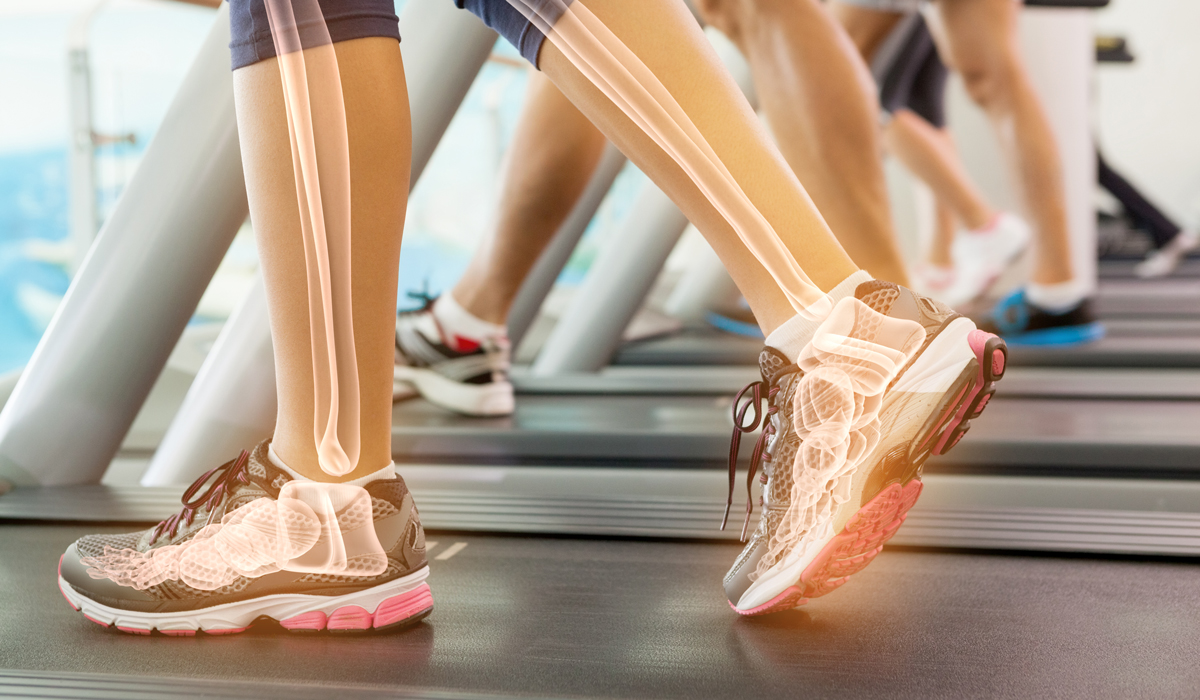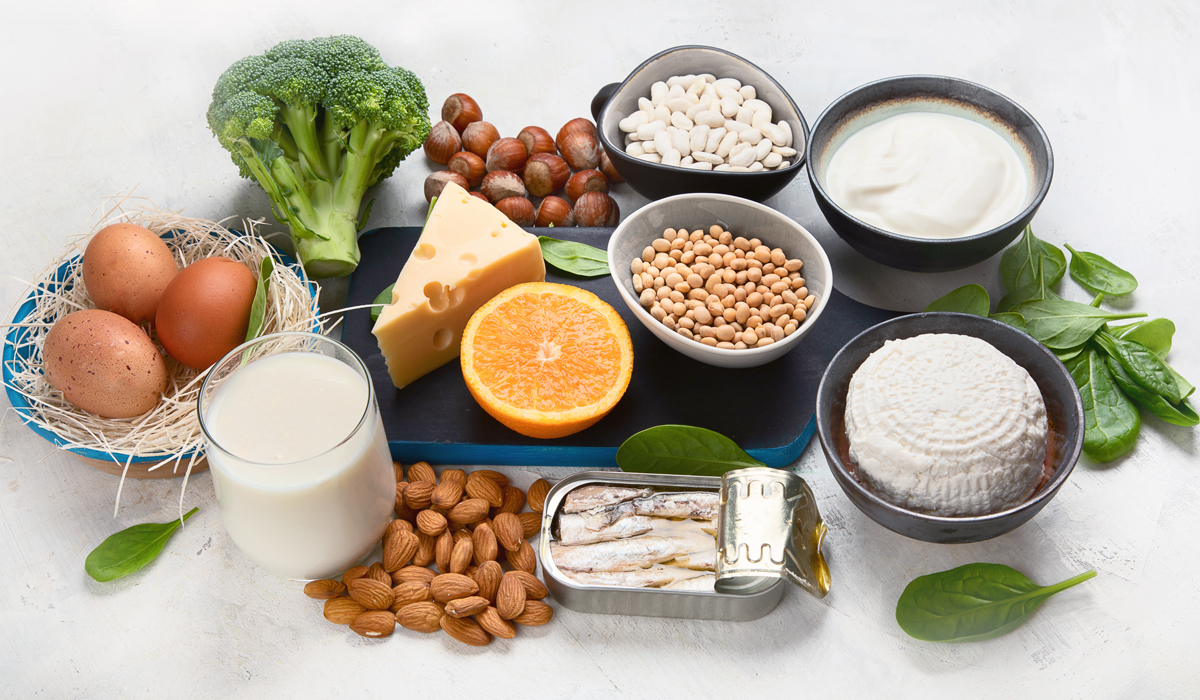Simple steps to strengthen your bones
Emma White - Certified Personal Trainer | 16 Apr, 2023
Our bones are active tissue, in much the same way as our muscle tissue and skin is. This means they can change – either becoming stronger or weaker in their structure. Most people know that calcium and vitamin D are important for healthy bones – but did you know exercise also plays a crucial role? To keep our bones strong, they need to be worked, which means placing them under tension. This is where regular exercise comes in!
Here I'll discuss how to exercise for healthy bones, which types of activity are best, and which are not so good.

Impact exercises
Movements which require a certain amount of impact are important for maintaining strong, healthy bones. This can be anything from walking (low impact) to jumping (high impact). The force that is created when our feet connect with the ground puts pressure on the bones of our skeleton which stimulates them to become stronger to help withstand the force. Just as working our muscles encourages them to adapt and become stronger, our bones respond in the same way.
Ideally, we should all carry out regular weight-bearing, impact exercises to help maintain healthy bones. Weight-bearing simply means when we're standing, and the weight of our entire body is being carried by our skeleton. Walking is a great example, and something most of us do every day. This does produce impact, but it's generally low impact, so the force applied to bones isn't huge. Stepping up your walking to power walks, hill climbs, light jogging or even an energetic dance class would be even more beneficial for working bones and making them stronger.

Strength-based exercises
As well as impact exercise, resistance or strength-based activity is vital for maintaining strong and healthy bones. Our muscles and bones work together to hold our posture and enable movements – they're a great team! Exercises which work our muscles naturally work our bones too, since they're connected to each other by tendons. When our muscles contract, they pull on our bones via our tendons, creating tension. This means our bones are worked to the level that our muscles are. If we gradually lift heavier and heavier weights because our muscles are getting stronger, then our bones will also adapt to become stronger, to cope with the extra force applied by our muscles.
Strength-based exercise is anything which requires our muscles to work against a resistance. So this can be resistance created by our own body e.g. when doing a bodyweight squat, or when using resistance bands, or good old fashioned barbells/dumbbells.

Less bone-promoting exercises
All exercise is great for our health, and ultimately, everyone should try to do more of the stuff they enjoy doing as the number one rule. That said, when it comes to bone health, there are some exercises which are not as impactful as others. Activities such as swimming and cycling where the impact element has been removed, are not as effective at working our bones. In the case of swimming, this is because the water takes away the impact element, making it more of a cardio activity. And with cycling, as you're sat down and rotating your hip joints rather than impacting the ground with your feet, it's not a weight-bearing or impact activity.
That said, both activities can be revved up to challenge our muscles and help strength bones in that way instead. In the case of swimming, working at a faster rate and including different strokes can help to work our muscles harder and lead to muscle gains (I mean we've all seen Michael Phelps' back muscles haven't we?!). With cycling, upping the resistance and going for some hill climbs is a great way to work those lower leg muscles and lead to strength gains – for both bones and muscles. Most pro-cyclists have got pretty mega thigh and bum muscles, so the proof is clear to see there – cycle hard enough and your muscles (and bones) will respond.
In an ideal world we would do a mixture of activities including impact, resistance and more cardio-based stuff like swimming and cycling, to benefit overall health. If bone health is your goal, however, prioritise weight-bearing, impact moves and lifting weights as much as possible.

Bone-healthy exercise regime
The Royal Osteoporosis Society recommends:
Impact exercise – 50 moderate impacts per day
Activities such as jumping, skipping or dancing where you jump around would be great for reaching the 50 impacts per day.
Resistance – 2-3 times a week
Schedule in resistance/weight training 2-3 times per week – aim to work the whole body, don't just focus on the upper body for example, as that will mean the bones of the lower body aren't reaping the benefits. Start with your body weight doing exercises like squats, tricep dips off a step and press-ups, then progress to resistance bands for added tension, then on to lifting weights such as dumbbells and barbells. Aim for three sets of 8-12 repetitions of each exercise to best engage and strengthen muscles – you should be very challenged by the last few reps of the final set.
Note: As well as this, we should all aim for at least 150 minutes of moderate intensity exercise every week for general health.

Diet and bone health
Let's not forget about a healthy diet too! While exercise is great for strengthening our bones, it can't be as beneficial as it should be if we're not giving our body and bones the nutrients they need to grow and strengthen. The three most essential nutrients for healthy bones (and strong muscles) are:
Calcium – main food sources include dairy products such as milk and yogurt, as well as leafy greens, fish where you eat the bones and fortified dairy alternatives such as soya milk. We should aim to eat at least three portions of dairy-rich foods each day. A portion is 30g cheese, 125g low-fat yogurt or 200ml milk.
Vitamin D – this hormone (yes vitamin D is a hormone!), which is produced by our skin when it's exposed to sunlight, plays an essential role in our bones absorbing calcium. We should ideally make what we need when our skin is exposed to sunlight, but in the darker autumn/winter months this isn't always the case. Which is why it's recommended everyone takes a daily vitamin D supplement between October and March to ensure we get enough.
Food sources of vitamin D aren't in abundance, but some of the best are eggs, oily fish and fortified drinks, spreads and breakfast cereals.
Protein – proteins are the building blocks of all the cells in the human body, making them important for both bone and muscle health. Our muscles especially rely on adequate protein in order to regenerate and grow when stimulated to do so. It's recommended we aim for at least 0.75g protein per kg body weight – more if you exercise a lot.
Summary
To promote healthy bones through exercise, we should aim to include weight-bearing, impact moves as well as strength training in our regular routine. Placing our bones under tension and encouraging them to absorb force through impact is the best way to keep them adapting and getting stronger.

Emma White (Certified Personal Trainer) has always loved fitness. She's passionate about the many benefits of regular exercise, particularly the positive impact on mental health and overall quality of life, as well as how it provides the key to successful weight management.











